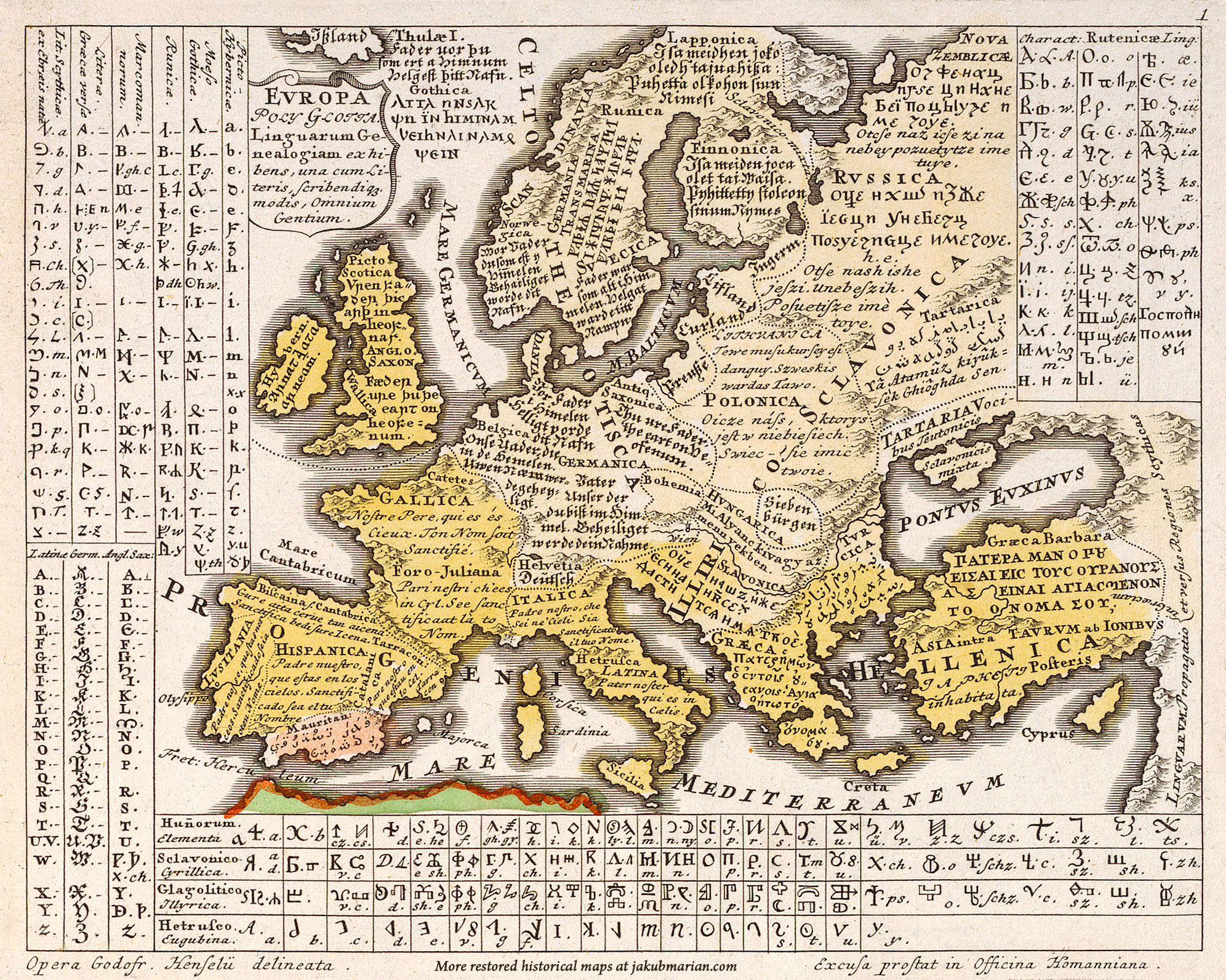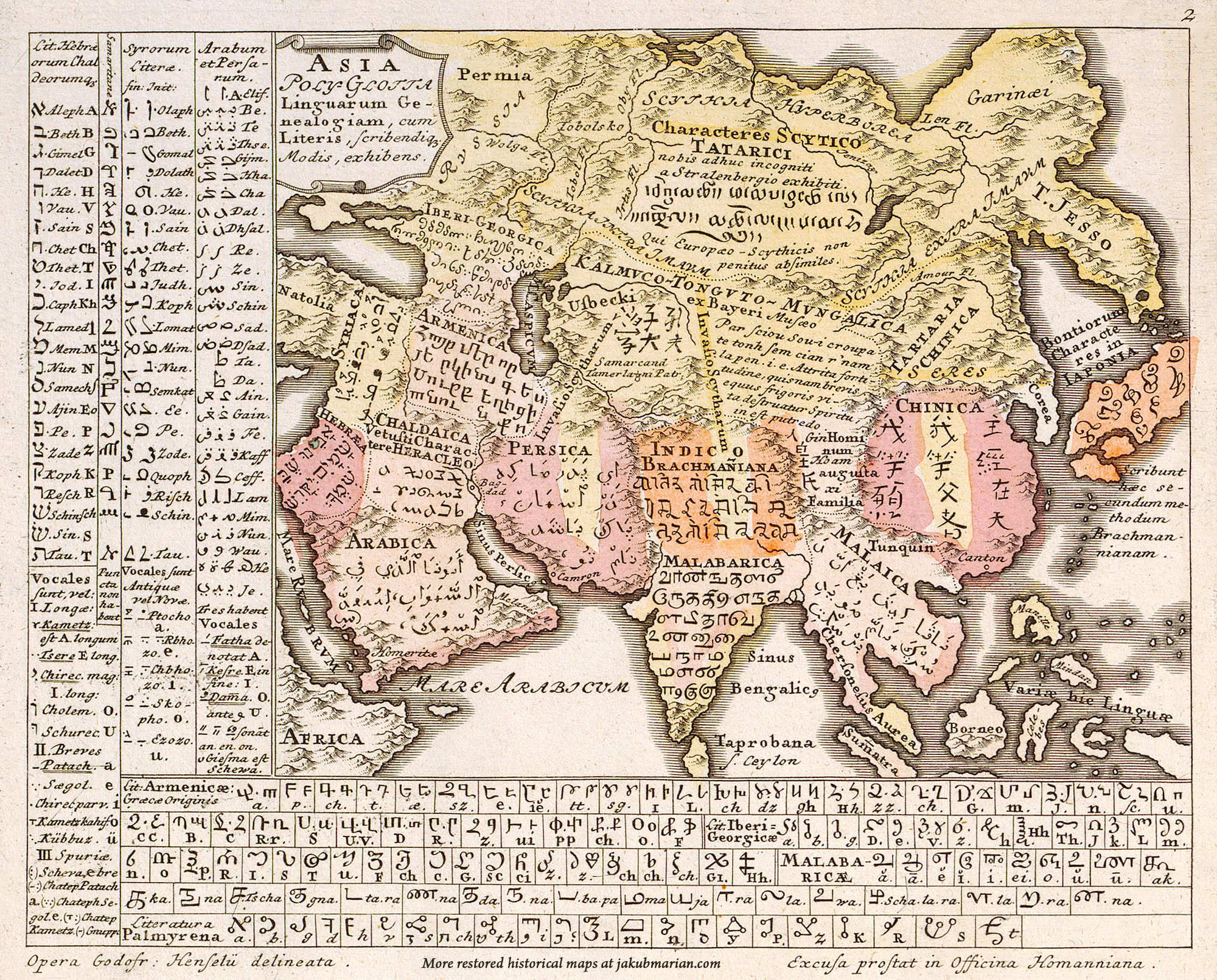Gottfried Hensel (1687–1765) was a German linguist. His book Synopsis Universae Philologiae, published in 1741, was an early work on comparative linguistics, which strove to present all the world’s languages known at the time together with their writing systems.
The book contained several maps showing the translation of the Lord’s Prayer into various languages. Cornell University Library has a photo of the maps, which I have digitally restored. You can see the final result below:

Amazingly, Hensel not only gives us the translations of the prayer but also prints each translation in the predominant style used to write each language (e.g. fraktur for German).
The map does contain some errors, though. For example, the Sami (Lapponica) translation in the north of Scandinavia seems to be just a Finnish dialect, and the texts written with the Cyrillic alphabet look rather odd.
Hensel probably had to use some second-hand and third-hand transcriptions, which is even more evident from his map of Asia (the Japanese one does not resemble the Japanese writing system at all):

Finally, Hensel’s map of Africa mostly shows different known ethnic groups rather than scripts and translations, since the understanding of African languages of the time was still very limited:

 Tip: Are you a non-native English speaker? I have just finished creating a
Tip: Are you a non-native English speaker? I have just finished creating a  Web App
Web App
